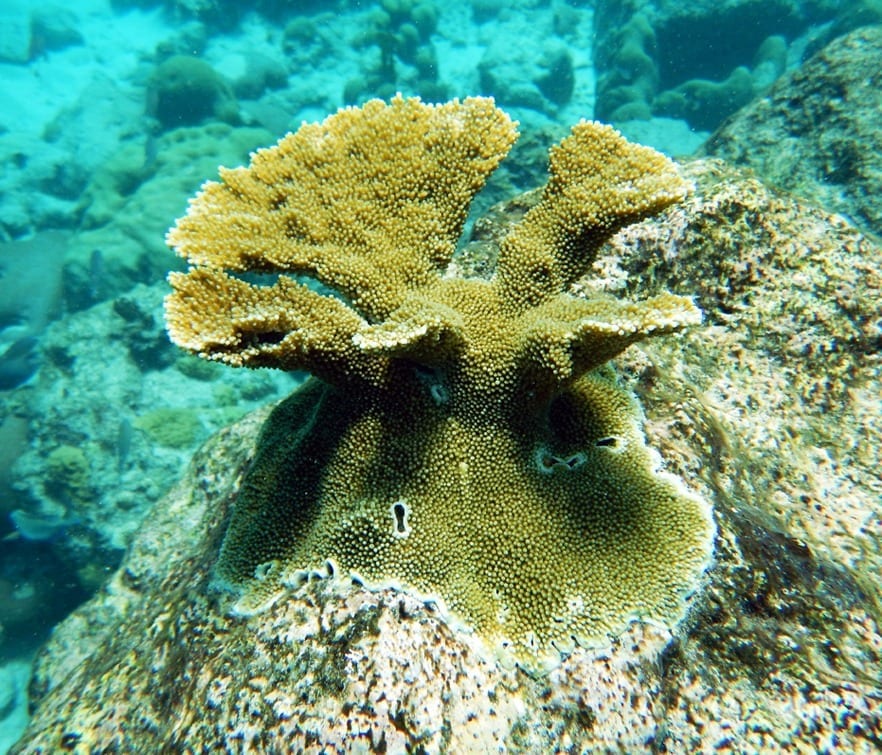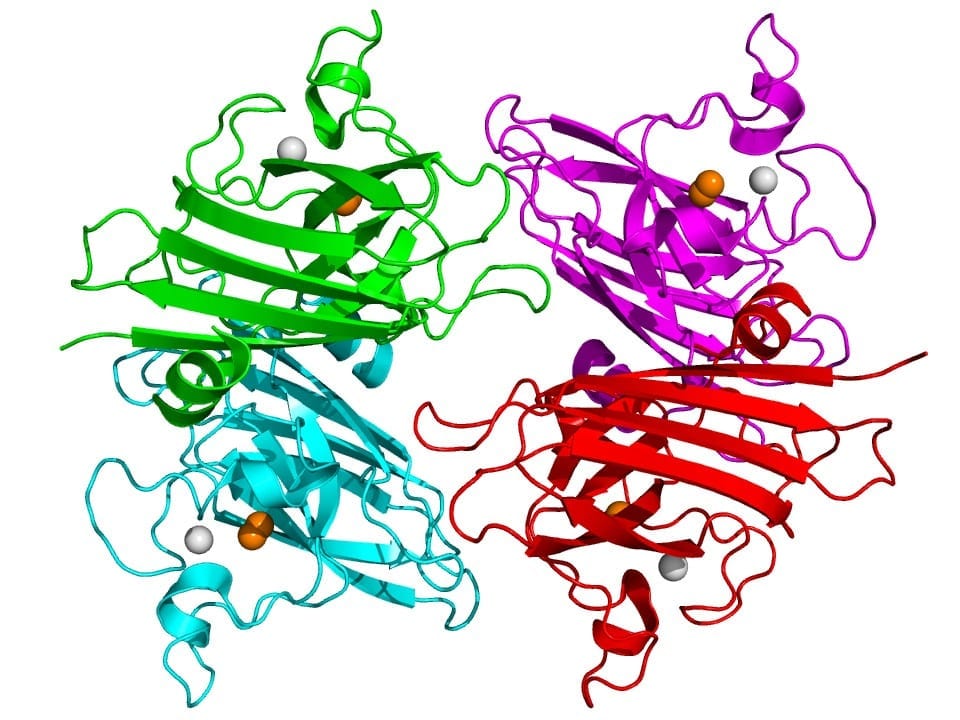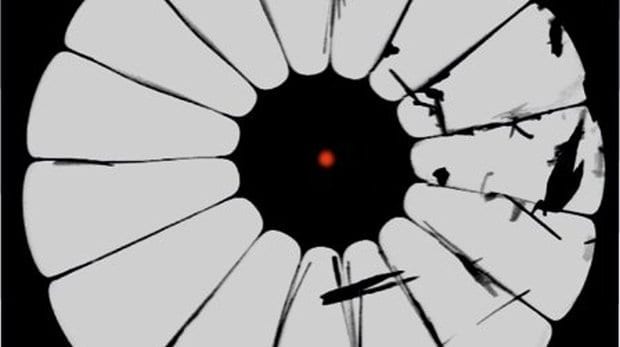
New hope for endangered corals: SECORE-scientists take an important step towards sustainable restoration of Caribbean reefs.
Researchers of SECORE International (USA, Germany), the University of Amsterdam(Netherlands) and the Carmabi Marine Research Station (Curaçao) have for the first time successfully raised laboratory-bred colonies of a threatened Caribbean coral species to sexual maturity. “In 2011, offspring of the critically endangered elkhorn coral (Acropora palmata) were reared from gametes collected in the field and were outplanted to a reef one year later”, explains Valérie Chamberland, coral reef ecologist working for SECORE and Carmabi. “In four years, these branching corals have grown to a size of a soccer ball and reproduced, simultaneously with their natural population, in September 2015. This event marks the first ever successful rearing of a threatened Caribbean coral species to its reproductive age.” These findings have been published in the latest issue of the scientific journal Bulletin of Marine Science.
Due to its large size and branching shape, elkhorn corals created vast forests in shallow reef waters that protect shores from incoming storms and provide a critical habitat for a myriad of other reef organisms, including ecologically and economically important fish species. An estimated 80% of all Caribbean corals have disappeared over the last four decades and repopulating degraded reefs has since become a management priority throughout the Caribbean region. The elkhorn coral was one of the species whose decline was so severe that it was one of the first coral species to be listed as threatened under the U.S. Endangered Species act in 2006, and as critically endangered under the IUCN Red List of Threatened species in 2008. Consequently, measures to aid Caribbean reef recovery often focus on the elkhorn coral given its major decline and its ecological importance.
Since 2010, SECORE, Carmabi, and partners from aquariums around the world such as Curaçao Sea Aquarium, Columbus Zoo and Aquarium, Pittsburgh Zoo & PPG Aquarium, Shedd Aquarium, and Henry Doorly Zoo, started a project aimed at developing techniques to rear larger numbers of elkhorn coral offspring so they could eventually be outplanted to degraded reefs throughout the Caribbean. “Our approach differs substantially from the one generally used by the large number of reef restoration groups that operate throughout the Caribbean”, explains Dirk Petersen, coral reef expert and director of SECORE. “These groups generally use the ‘coral gardening’ approach, where small fragments are harvested from coral colonies on the reef. The fragments are then grown in special nurseries to larger sizes before they are returned to the reef.” Although this method has been applied throughout the Caribbean, it does not allow for new genetic combinations as the fragments harbor the same genes as the donor colonies and are therefore copies of their parents. “By contrast, SECORE developed a technique whereby male and female gametes are caught in the wild and fertilized in the laboratory to raise larger numbers of genetically unique corals”, says Dirk Petersen.
Elkhorn corals reproduce only once or twice a year, generally a few days after the full moon in August. During those nights, ,Acropora colonies synchronously release their gametes into the water column. The project team collects a small proportion of these gametes by gently placing special nets around spawning colonies to collect the floating gamete bundles. After collection, the researchers produce coral embryos by in vitro fertilization, mixing sperm and eggs in the laboratory. Coral embryos develop into swimming larvae within days and eventually settle onto specifically designed substrates. After a short nursery period, the project team outplants the substrates with the newly settled corals to the reef. Details on the techniques developed by SECORE during this project were recently published in the scientific journal Global Ecology and Conservation.
“We just learned that elkhorn corals can reach sexual maturity in only 4 years. This is exciting news, as we now know that offspring raised in the laboratory and outplanted to a reef can contribute to the natural pool of gametes during the annual mass-spawning of elkhorn corals within 4 years”, says Valérie Chamberland. By using a restoration method based on sexual rather than asexual (or clonal) reproduction, the SECORE method also promotes the formation of new genotypes that could potentially cope better with the conditions on modern reefs than their already struggling parents. These sexually-bred corals therefore not only aid in the recovery of dwindling elkhorn coral populations by increasing the number of colonies, but also by increasing the genetic diversity of this critically endangered species, thus giving evolution the opportunity to play its part.
Read more: Laboratory-bred corals reproduce in the wild
The Latest on: Laboratory-bred corals
[google_news title=”” keyword=”Laboratory-bred corals” num_posts=”10″ blurb_length=”0″ show_thumb=”left”]
via Google News
The Latest on: Laboratory-bred corals
- 'We are learning how to act as coral midwives'on April 26, 2024 at 11:25 pm
A team at the University of Derby is at the forefront of a race to save our coral reefs. Their research centres on breeding coral, which is more resilient to climate change and disease.Laboratories ...
- The end of coral reefs as we know themon April 26, 2024 at 4:15 am
More than five years ago, the world’s top climate scientists made a frightening prediction: If the planet warms by 1.5 degrees Celsius, relative to preindustrial times, 70 to 90 percent of coral reefs ...
- Corals bred in a zoo have joined Europe's largest reef. This is offering scientists hopeon April 26, 2024 at 12:59 am
A lab in a Dutch zoo has presented special corals that bred themselves and nestled them in Europe's largest coral reef ...
- Coral Reefs Newson April 23, 2024 at 5:00 pm
2024 — Producing coral skeleton components in the easy-to-use soft-bodied sea anemone Nematostella creates a perfect lab system for studying, and eventually helping, corals threatened by a changing ...
- From caves to coral reefs: the science lab takes on new meaningon April 22, 2024 at 5:47 pm
From Egyptian scientists creating new flower colours to surfers exploring coral reefs in Hawaii and the Pope’s astronomer in Rome, the images show them at work on varied projects.
- Scientists’ experiment is ‘beacon of hope’ for coral reefs on brink of global collapseon April 20, 2024 at 11:52 am
Recordings of healthy fish are being transmitted to attract heat-tolerant larvae back to degraded reefs in the Maldives ...
- As Climate Change Imperils Coral Reefs, Scientists Are Deep-Freezing Corals To Repopulate Future Oceanson April 20, 2024 at 2:00 am
If given the chance, these selectively bred corals held in captivity could significantly increase the wild elkhorn gene pool. Preserving sperm cells and larvae is an important hedge against the ...
- Tiny biodegradable straw forts could protect new coral from fish who snack on it ‘like popcorn’on April 14, 2024 at 11:30 am
A tiny fort of drinking straws offers new hope for what some call the rainforest of the sea: critically endangered coral reef populations that some fish snack on like popcorn.
- Four years later, Florida's rescued coral thriving on SeaWorld's 'Noah's Ark'on April 12, 2024 at 3:00 am
Because stony coral is still infecting reefs, none of the rescued coral or lab-bred coral have been returned to the reef. But Zimmerman says he’s hopeful. “This pipeline, this continuous cycle ...
- Coral researchers awarded EXIST start-up fundingon April 8, 2024 at 9:49 am
A few years ago, they became the first team of scientists in Germany to successfully breed stony corals in the lab through sexual reproduction. The young corals thus produced are much better ...
via Bing News










